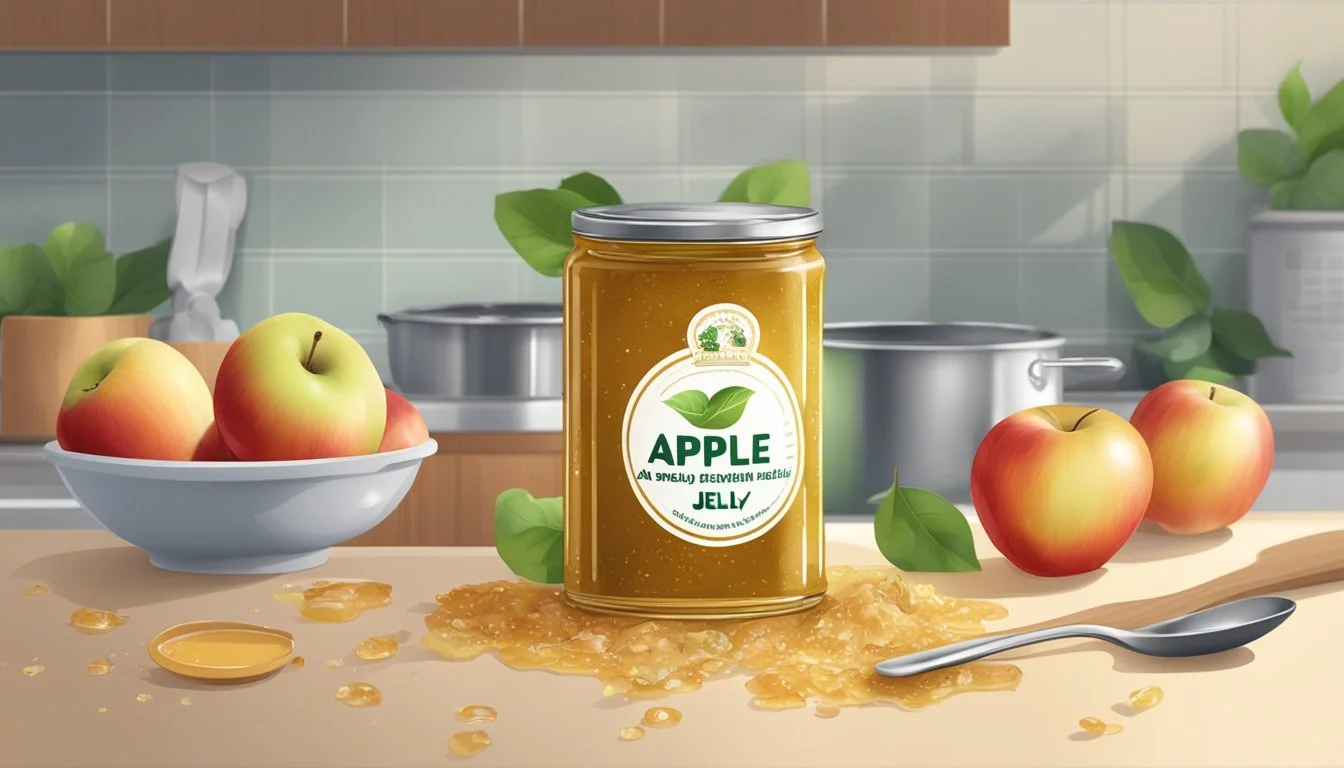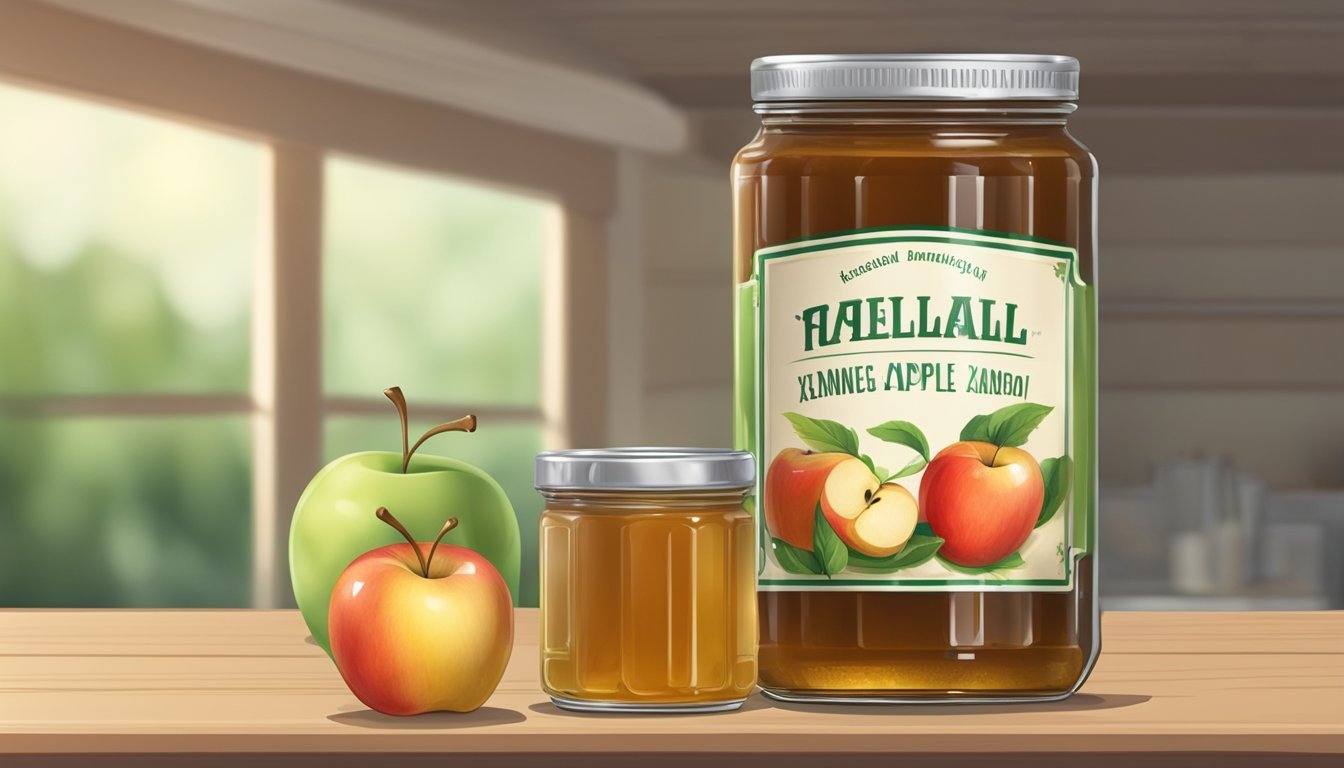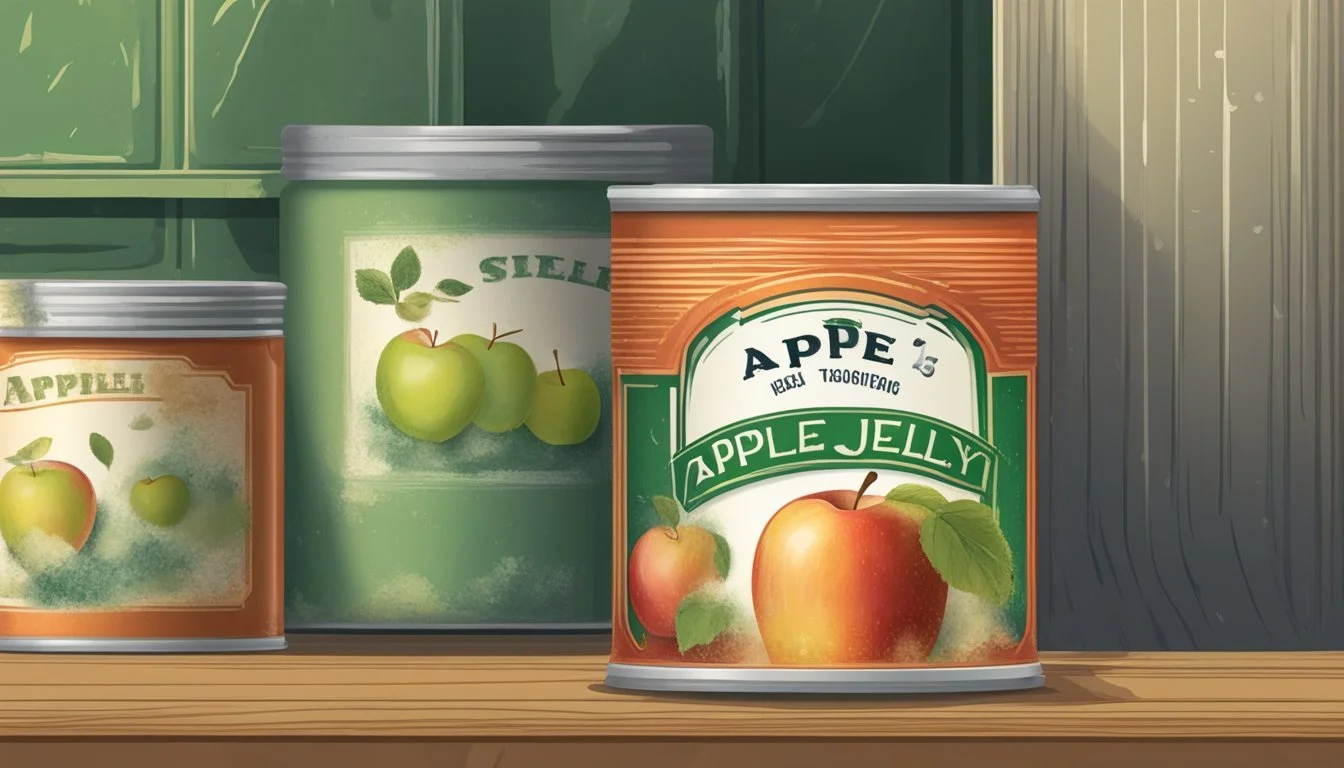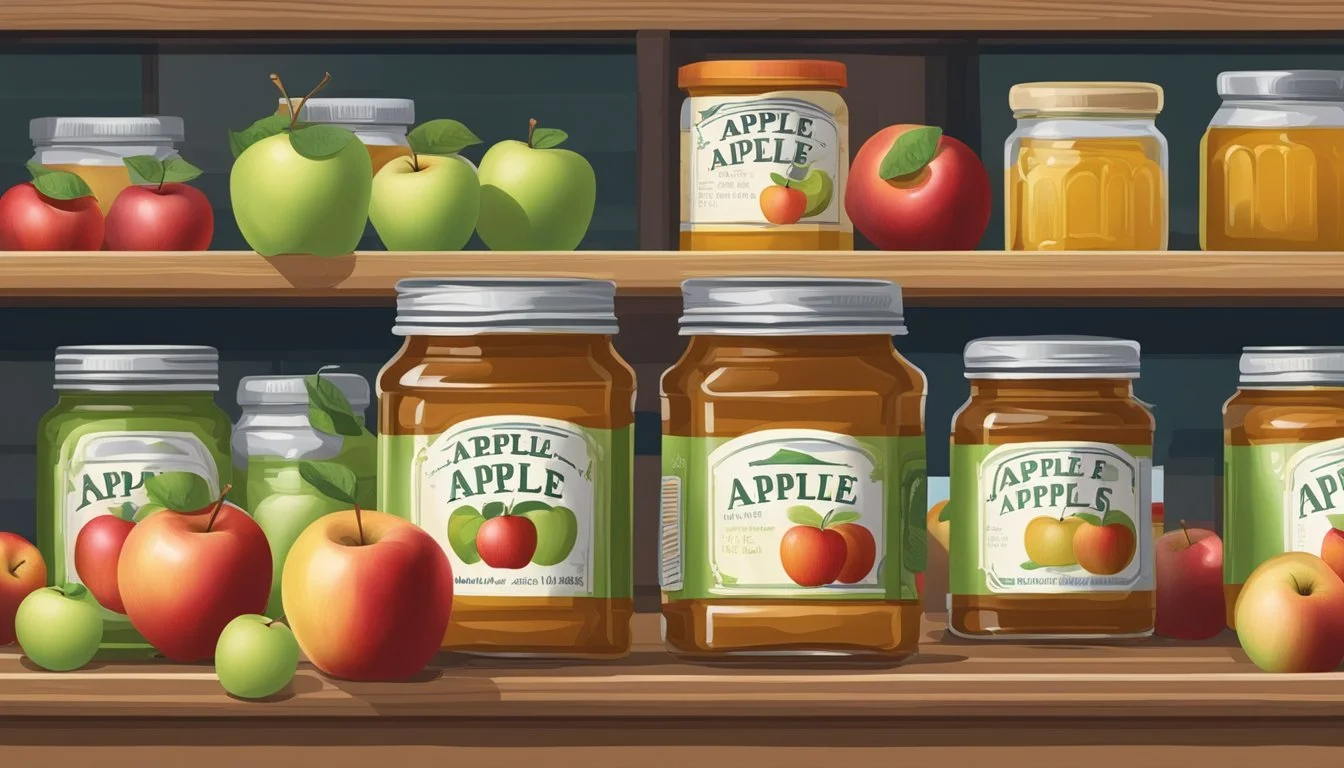Does Canned Apple Jelly Expire?
Shelf Life and Storage Tips
Canned apple jelly can be a delightful addition to your pantry, but many wonder about its shelf life. Unopened jars of apple jelly can typically maintain their best quality for about two years when stored in a cool, dry place. This timespan can sometimes extend slightly if storage conditions are optimal.
It's important to note that while an unopened jar might last longer than indicated on the expiration date, changes in color, texture, and flavor can occur over time. Always check the seal and the condition of the jelly before consuming, as the preserving process doesn't guarantee perpetual freshness.
Proper storage can maximize the shelf life, but once opened, it's best to consume the jelly within a few months. Paying attention to the visual and olfactory cues can help ensure you enjoy your apple jelly safely and at its best quality.
Understanding Canned Apple Jelly
Apple jelly is a popular fruit spread made primarily from apples, sugar, and pectin. The canning process ensures a long shelf life, preserving the jelly's flavor and nutritional qualities.
What Is Apple Jelly?
Apple jelly is a type of fruit preserve created from apple juice, sugar, and pectin. Unlike jams, which include the fruit pulp, jellies are made from the juice, resulting in a clear and smooth texture.
This jelly is often used as a spread on bread, a glaze for meats, or a filling for pastries. Its versatility and sweetness make it a staple in many households.
Ingredients and Manufacturing Process
The primary ingredients in apple jelly include apple juice, sugar, and pectin. Pectin is a natural gelling agent derived from fruits, which helps to set the jelly. Some commercial versions may also include preservatives to extend shelf life.
The manufacturing process begins with extracting juice from fresh apples. The juice is then combined with sugar and pectin in a kettle. The mixture is boiled until it reaches the desired consistency, typically when it reaches 8 degrees above the boiling point of water.
Once cooked, the hot jelly is poured into sterilized jars and sealed. This canning process kills any bacteria, ensuring the jelly remains safe to eat for an extended period.
Determining the Shelf Life
Determining the shelf life of canned apple jelly involves analyzing label indicators, various storage factors, and adhering to USDA guidelines for food safety.
Shelf Life Indicators on Labels
Labels on canned apple jelly typically include an expiration date or best quality date. The expiration date indicates the point after which the product may no longer be safe to consume. The best quality date suggests when the product is at its peak quality, though it might still be edible beyond this date.
Consumers should always check for these dates before purchasing or consuming canned apple jelly. An unopened jar, if stored properly, maintains its best quality for about 2 years. Always inspect the product for signs of spoilage, such as mold or odd odors, before use.
Shelf Stability Factors
Several factors influence the shelf life of apple jelly, including storage conditions, ingredients, and manufacturing process. Proper storage in a cool, dry place away from direct sunlight is crucial. Ingredient quality and the manufacturing process also play significant roles.
Freezing can prolong shelf life, but may alter texture and consistency. Unopened jelly can be safe for extended periods, but once opened, it should be consumed within 6 months to a year for best quality.
USDA Guidelines and Food Safety
Adhering to USDA guidelines is critical for ensuring the safety and quality of canned apple jelly. The USDA recommends storing opened jams and jellies in the refrigerator at 40°F or lower. Full-sugar, pectin-added jams and jellies can generally last about a month in the refrigerator.
For unopened cans, following the expiration and best quality dates is essential. The USDA emphasizes checking for spoilage indicators such as mold, unusual smells, or changes in color and texture to prevent foodborne illnesses.
Storage Conditions for Optimal Preservation
Proper storage conditions are crucial to ensure the longevity and quality of apple jelly. Both before and after opening, specific measures need to be taken to maintain its freshness and edibility.
Before Opening
Unopened apple jelly should be stored in a cool, dry, and dark place. This helps maintain the jelly's quality and prevents spoilage. The pantry or a cupboard away from direct sunlight and heat sources is ideal. Make sure the storage temperature is stable, avoiding areas near stoves, ovens, or other heat-generating appliances.
Shelf Life: When stored under optimal conditions, an unopened jar of apple jelly generally remains in its best quality for about 2 years. While it can last even longer, always check for signs of spoilage such as mold, off odors, or an altered appearance before consumption.
After Opening
Once opened, apple jelly must be refrigerated to prevent spoilage and maintain its quality. Ensure the jar is tightly sealed after each use to minimize exposure to air and contaminants. The refrigerator should maintain a consistent temperature at or below 40°F (4°C).
Shelf Life: An opened jar of apple jelly can last for about 1 month in the refrigerator. Depending on how it's used and stored, it might last longer, but it's essential to always inspect for visible signs of spoilage like mold or an off smell. Using clean utensils when handling the jelly also helps preserve its freshness.
Spotting Spoilage and Understanding Food Safety
Identifying spoilage in canned apple jelly is crucial to prevent foodborne illnesses. Recognizing the signs and understanding the risks can help ensure safe consumption.
Visible Signs of Spoilage
Spoiled apple jelly may exhibit several visible signs. One common indicator is mold growth, which can appear as green or black spots on the jelly's surface.
Color Changes: Any deviation from the jelly’s normal color can signify spoilage.
Texture: If the jelly appears overly watery or has an unusual texture, it may have gone bad.
Packaging: Bulging or leaking cans suggest that bacteria or other microorganisms have contaminated the product.
Examining these signs carefully can prevent potential health risks associated with consuming expired jelly.
Food Safety Risks
Consuming spoiled jelly can pose significant food safety risks. The presence of harmful microorganisms, such as bacteria and mold, can lead to food poisoning.
Botulism: A serious and potentially fatal illness caused by a toxin produced by the bacteria Clostridium botulinum, often found in improperly canned foods.
Other Bacteria: Spoiled jelly can harbor pathogens like Salmonella and E. coli, leading to symptoms like nausea, vomiting, and diarrhea.
Smell: A sour or off odor is another clear indication that the jelly should be discarded.
By understanding these risks, individuals can make informed decisions about the safety of their food. Taking precautions and following proper storage guidelines can also help prolong the shelf life of canned apple jelly and prevent spoilage.
Assessing Quality and Freshness
Canned apple jelly can maintain its quality and freshness for an extended period when stored properly. Key indicators such as taste, flavor, texture, and color can help determine if the jelly is still at its peak quality.
Taste and Flavor Profile
Apple jelly at peak quality has a sweet and slightly tart flavor. Over time, the intensity of the apple flavor may diminish. If the jelly tastes off or has a fermented undertone, it may indicate spoilage. Consuming jelly well past its expiration date, even if unopened, can sometimes result in a less enjoyable flavor experience.
Texture and Color
The texture of apple jelly is usually smooth and gel-like. With age, the jelly may become grainy or syrupy due to crystallization or breakdown of the gelling agents. A noticeable change in texture can signal that the jelly is no longer fresh.
Regarding color, fresh apple jelly typically has a clear, amber hue. Darkening or cloudiness can occur over time, indicating potential quality degradation. Always inspect the jelly visually before consumption.
Freshness and Quality Over Time
Unopened apple jelly stored in a cool, dry place can last for one to two years beyond the expiration date. Once opened, it should be refrigerated and consumed within six months to maintain peak quality. Always check for signs of spoilage, such as mold or unusual odors, to ensure the jelly remains safe to eat.
Proper storage and regular checks will help maintain the quality and freshness of canned apple jelly for as long as possible.
The Impact of External Factors on Jelly’s Shelf Life
External factors such as temperature variations, light exposure, and the use of preservatives can significantly affect the shelf life of canned apple jelly. Understanding these elements can help in extending its longevity and ensuring its quality remains intact.
Temperature Variations
Temperature plays a crucial role in the shelf life of canned apple jelly. Storing jelly at room temperature or in a cool environment without drastic fluctuations can help maintain its quality.
Exposure to heat can cause the jelly to break down faster and may lead to microbial growth, leading to spoilage. Keeping the jelly away from heat sources, such as ovens or stoves, is essential.
In contrast, extreme cold temperatures, like those in a freezer, can alter the texture and consistency of the jelly. Though freezing may extend shelf life, it may impact the gel structure formed by pectin, affecting overall texture.
Light Exposure and Oxidation
Direct sunlight can deteriorate canned apple jelly by initiating the process of oxidation. UV rays from the sun can break down the jelly's components, leading to changes in color and flavor.
Proper storage away from light is critical to preserving the jelly's integrity. Using opaque containers or storing jelly in dark places like cupboards can effectively minimize oxidation.
Oxidation also reduces nutritional value over time. Therefore, limiting light exposure by storing jelly in cool, dark locations can help in maintaining both its taste and nutritive qualities longer.
Preservatives and Their Role
Preservatives are added to canned apple jelly to extend its shelf life by inhibiting microbial growth. Common preservatives, such as citric acid and sorbic acid, help in keeping mold and bacteria at bay.
The effectiveness of preservatives also depends on the manufacturing process and the storage conditions. A well-sealed jar that prevents air from entering will aid in the preservative's effectiveness.
While preservatives do an excellent job, proper storage remains a complementary factor. Ensuring that the jelly is kept in a cool, dark place can maximize the benefits provided by these additives.
By understanding and controlling these factors, the shelf life of canned apple jelly can be significantly extended, ensuring the product remains safe and enjoyable for longer periods.
Best Practices for Long-Term Storage
Storing apple jelly correctly, whether homemade or commercial, is essential for maintaining its flavor and safety. Proper storage conditions and understanding the differences between home-canned and commercial jellies will help extend the shelf life.
Canning at Home
When canning apple jelly at home, using proper techniques is crucial. Water bath canning is the preferred method for preserving jelly, as it ensures a good seal and proper sterilization. The water bath must reach the appropriate temperature to eliminate potential bacteria.
The jars used should be sterilized before filling, and it's important to use airtight lids. Label the jars with the date of canning to keep track of their age. Store the jars in a cool, dark, and dry place like a pantry or cellar. Ideally, homemade jelly maintains its best quality for up to one year, but it can stay safe to consume for longer if stored under optimal conditions.
Commercial Jellies and Best By Dates
Commercial apple jellies typically come with a best by date, which indicates when the product will be at its peak quality. Proper storage before and after opening can significantly affect the jelly's longevity. An unopened jar should be kept in a pantry or cupboard, away from direct sunlight and moisture.
Once opened, store the jelly in the refrigerator in an airtight container to maintain freshness and prevent contamination. Although best by dates are useful, many commercial jellies can last beyond this date if the seal remains intact and no signs of spoilage, such as mold or off-odor, are present.
Commercially canned jellies often remain safe beyond their best by date due to the pasteurization process they undergo, which eliminates bacteria and extends shelf life.







